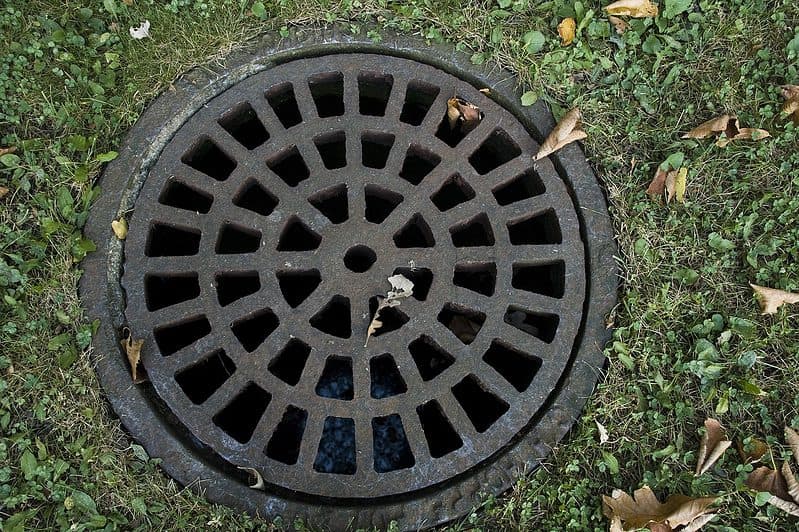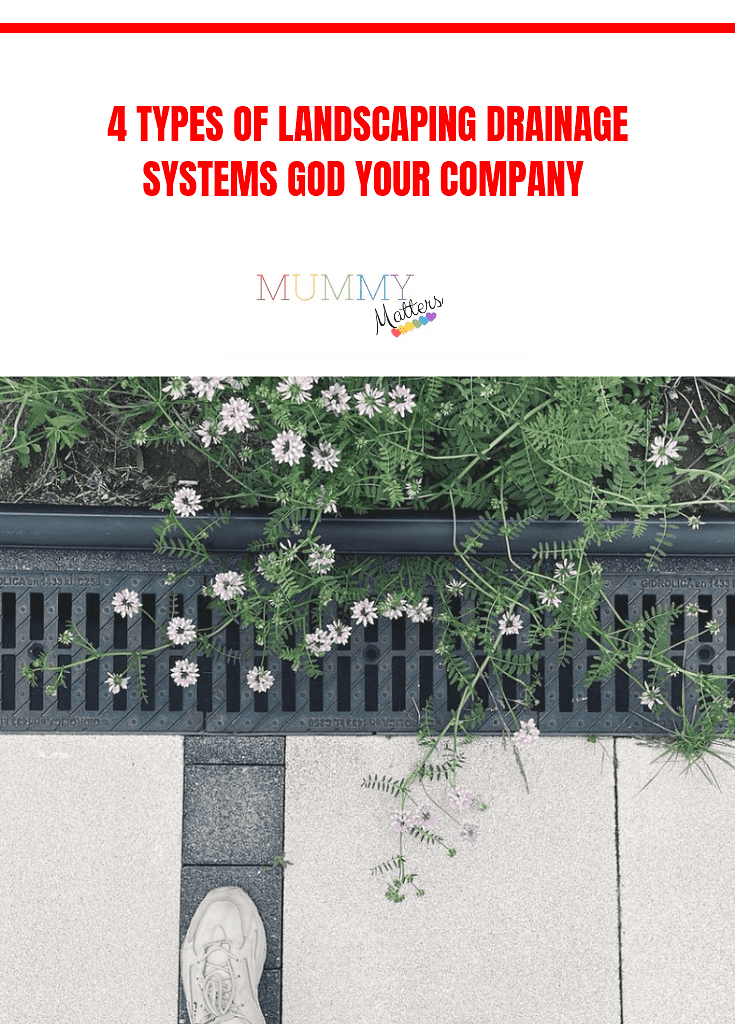First appearances last long and affect every subsequent decision made afterwards. Hence a company building and its environment are an essential part of a business image; therefore can’t be taken for granted.
The image is why businesses ensure a clean and conducive working environment. And one of the ways to achieve this is with a working drainage system.
Drainage systems are essential to remove water from buildings and their surroundings. Companies use this emptying approach to prevent the pooling of used water.
It has taken cognizance of the need for a working system. The company assesses landscaping, ground geomorphology, and topography. To choose the type of landscaping drainage system that would work for them.
Types of Landscaping Drainage Systems
French Drain (Subsurface Drain)
The French drain is a typical part of basement waterproofing systems. This trench drain involves perforated pipe functioning like gutters, and its work is to remove water accumulating in the ground.
The drain stands out because it uses gravel and layered filter fabric (geotextile). The use is the arrangement of all of these components. And how by properly arranging them, maximum effectiveness is achieved.
In constructing a French drain, a gutter or trench is dug. Then a filter fabric is laid inside it to allow easy water permeability by preventing dust from getting into the trench.
After laying the fabric, the gravel is washed-up to remove dust. And when water is poured into the trench on top of the filter. The gravel allows water to drain more quickly.
Pipes that have holes drilled into them are laid down on the gravel, with the drilled section directly on top of the gravel. Additional gravel is heaped on the pipes. After which, dirt is used to cover the layers.
How French Drain Works
Water collects from the top of the dug trench, the underside of it, and the sides. The filter fabric allows only the water to come into the trench.
The gravel prevents the perforated pipe from coming into contact with the dirt. Water passes through the gravel and enters the holes in the pipe. The collected water then moves to an exit point.
Why Use a French Drain?
The French drain has varieties, and they are quite common. With these options, you can get a French drain tailored to solve your drainage problem.
Especially if the drainage problem involves saturated soil, you must protect the basement, retaining wall, and foundation.
Dry Wells
Dry wells are constructed by digging up a significant amount of soil to a depth that does not reach the aquifers. Then the pit is used to house a large storage container.
This container collects surface runoff, water poolings, and stormwater by gravity. The water collected slowly dispersed through small holes in the container into the soil.
This slow release of collected water is quite effective. Even some other methods employed in drainage techniques end up emptying their collected water into dry wells.
The dry well shares superficial similarities with the French drain in being layered with washed gravel and geotextile filter fabric. Only now, on a much larger scale.
Why Employ the Dry Well System?
It is quite cheap to construct, and the tools required are easy to get. And construction can be completed in two days with diligence.
Another great reason is you wouldn’t have to worry about longevity. The container should host about 50 gallons of water; again, the water percolates out of the compartment.
Catch or Yard Basins
A catch or yard drain has to do with using a basin to hold excess water. It involves using pipes to direct water flow into a catch basin.
It is convenient when used on a smaller scale, even though it can collect plenty of moisture. Using it as part of a drainage system on a large landscape is better.
Catch or yard basins drainage works very well with dry wells on larger topography. Using pipes as transfer conduits would ensure the basins are always empty to receive runoff.
Why Use Catch or Yard Basins?

The equipment needed is inexpensive, and they are easy to install. The basin drainage system is a good technique for removing water.
It is most effective when combined with another drainage method to form a strategy.
Drainage Channels
A drainage channel is a very obvious and highly effective drainage system. It is mostly used on impervious surfaces hence why it is very common and often constructed in public landscapes.
Its design and construction involve a big trench or channel, a detachable grate, and other materials. To trap the water from getting to the soil and ultimately prevent pooling.
Channel drains are majorly big connectors for moving a big volume of water at once. So they are assets to have around your home during heavy rainfalls.
These drains are useful as a part of a drainage strategy. It is noted that they trap and need to move the trapped water somewhere else. Most people connect the exit to a dry well.
Why Construct a Channel Drain?
One major advantage is that it transfers a large amount of water simultaneously. So during floods and heavy downpours, the buildings are protected from water disasters.
Another reason is its ease of construction. And it is very discreet, and you wouldn’t know it is there at first glance. Eventually, the grate will give it away, though.
Which Drainage Should Your Company Use?

You must take a good look at your company’s topography. This first step would aid you in making a decision.
And if the landscape is larger, you might need a combination of drainage systems instead of just sticking to one for efficiency and longevity.
From the article, some drainage systems do quite well alone, and some whose effectiveness in larger areas lies in combination.
Constructing a good drainage system for your company works wonders for the business image. And therefore, it presents your company as astute in the eye of your clients.
Considerations when landscaping your Commercial Grounds
When landscaping at a commercial property, using manhole lifters becomes imperative. Commercial properties often have underground utility access points, including manholes, which need periodic maintenance or inspection. The Manhole Buddy offers a safe and efficient solution for accessing these underground structures. Its robust construction and ergonomic design ensure that landscaping professionals can easily lift heavy manhole covers alone without straining their backs or risking injury. By utilising the Manhole Buddy, landscapers can expedite their work, saving time and effort. This tool provides a practical and reliable method for accessing manholes, making it an invaluable asset when landscaping commercial properties.

